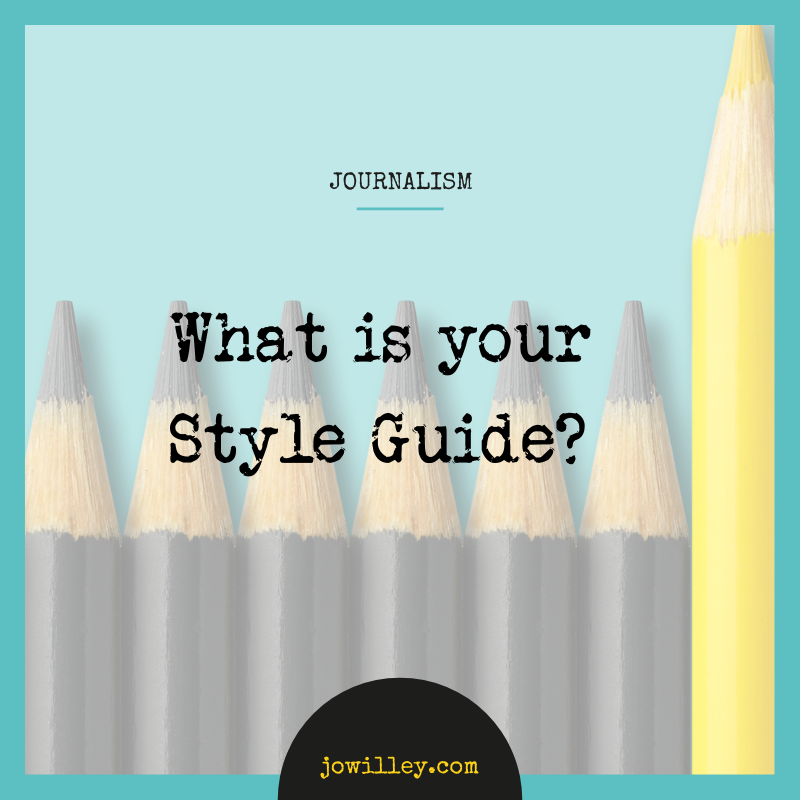
When I first became a journalist, we had a style guide! The newsroom “bible” everyone referred to with eager zeal on a regular basis to ensure they were using the “house style”. As a stickler for good grammar and accurate, polished copy, I loved it! And oh, the joy of adding to it! This young cub reporter was in raptures! Style guides seem to have fallen by the wayside, a bit like fax machines and the thin metal spike mounted in a piece of two-by-four on the Newsdesk (health and safety fanatics would have a field day!) to “spike” the rubbish stories (yes, really).
So, I was delighted to see this Guardian and Observer Style Guide available for all online. Yep, the whole style guide from A-Z. For anyone else who, like me, loves words – and accuracy in their writing – this is a great reference to have at your fingertips. And in case you’re wondering, like the true word geek I am, yes I have read it all the way through!
One of my favourites is the first – and it’s an all-too common mistake: “a or an before H?”
The rule of thumb in the style guide is to use “an” before a silent H as in an heir, an hour, an honest politician, an honorary consul and then use “a” before an aspirated H, for example, a hero, a hotel, a historian. However, it does point out that you mustn’t change a direct quote if someone has said “an historic”, for example.
We all commonly use the words Portakabin™ or Portaloo™ to refer to any portable building. However, they are both trademarks and, as the style guide says, if you use these terms when you are meaning a general portable building or portable toilet rather than these makes specifically, “you are certain to receive a letter from the Portakabin™ lawyers pointing out the error of your ways”. They are notorious for it!
One of my clients litters their writing with unnecessary commas. I have deleted literally hundreds and hundreds of them. They are falling foul of the Oxford comma which is a mistake I see time and again in content. Quite simply, an Oxford comma is put before the final “and” in lists. However, only sometimes! Straightforward lists such as “he ate ham, eggs and chips” don’t need one. However, sometimes it can help the reader, for example: “He ate cereal, kippers, bacon, eggs, toast and marmalade, and tea”.
But there are times when the Oxford comma is essential and, as the style guide shows, it’s clear when you compare these two sentences: “I dedicate this book to my parents, Martin Amis, and JK Rowling”, with: “I dedicate this book to my parents, Martin Amis and JK Rowling.” See the difference? I hope so! The first is dedicating the book to three separate entities – parents, Martin Amis and JK Rowling. The second makes it appear that the author’s parents are in fact Martin Amis and JK Rowling.
The Guardian’s Style Guide starts with a quote from Aristotle: “Style to be good must be clear. Clearness is secured by using words that are current and ordinary.” I love this and it is one of the key things I am always encouraging my clients to understand and implement in their content. It is vital if you want to communicate your story clearly that you “ditch the jargon” and talk in a human, simple way to ensure that what you say is not just heard but understood – that people feel something about what you said and want to act upon it.
I tend to find people from many industries, but particularly in healthcare, find comfort in complexity. It’s almost as if they feel “safe” talking to the media – or any audience in fact – as long as they use their everyday parlance. But I am clear in my belief, both as a storyteller, media trainer, and experienced communicator, that easy to understand language is the only way. Communication is about sharing or exchanging information, news, or ideas. But people need to understandthat information, news or those ideas for the communication to have been effective.
So next time you’re writing an article or press release, a piece for your website or an email pitch, instead of saying “adverse”, why not say “harmful”? Rather than saying “exacerbates”, why not just say “worsens”? A press release that just pinged into my Inbox referred to “occupational setting”. Why not just good old “workplace”? Words matter. Their power comes from what they make you feel, the emotions and pictures they can evoke. Make sure you are using the most impactful, easy to understand and, most importantly, “human” words you can. That is how you tell a great story.
If you want help finding your story from complex data or research or want to learn how you can be a better communicator by simplifying your language, then get in touch. And take a read of the style guide! You’ll thank me.